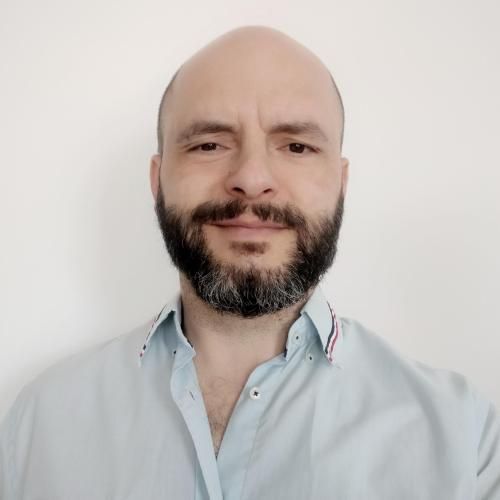
JAVIER
OLEA ARIZA
Profesor titular de universidad
Departamento: Estructura de la Materia, Física Térmica y Electrónica
Facultad: Ciencias Físicas
Área: Electromagnetismo
Grupo de investigación: Láminas delgadas y microelectrónica
Email: oleaariz@ucm.es
Doctor por la Universidad Complutense de Madrid con la tesis Procesos de implantación iónica para semiconductores de banda intermedia 2010. Dirigida por Dr. Germán González Díaz.
I started as a PhD student in the Thin Films and Microelectronics Group (TFMG) with a FPI grant, launching the Intermediate Band (IB) materials research line and working with Ti supersaturated Si. The interesting IB theory suggests a remarkable change in the way we would understand the optoelectronic properties of semiconductors. The experimental results in my thesis indicated that the IB theory is a concept that could dramatically change the field of photovoltaics and infrared detection. During a short stay in the Solar Energy Materials Research Group (Berkeley, California), under the supervision of Dr. Wladek Walukievicz, I worked on the highly-mismatched alloys, a special type of IB material. I also have been collaborating for more than a decade with the Silicon and New Concepts for Solar Cells group at the Solar Energy Institute (Univ. Politécnica de Madrid) with several projects and publications, and also with a Juan de la Cierva grant (2012 – 2014). The IB theory was originated in this group (Profs. A. Luque and A. Martí). The IB research line that I started guided the TFMG to the experimental demonstration of the basic concepts of the IB theory, to the discovering of the supersaturated materials based on Si and to the developing of a new type of IR detector based on Si and working at room temperature and photovoltaic devices with response at energies below the bandgap of the semiconductor. All this work has been validated with theoretical models, permitting the extrapolation of the results to other semiconductors, and optimizing the fabrication of materials and devices. Lately, we have published some papers dealing with the possibility of developing a high efficient solar cell based on GaP:Ti and a very interesting IR detector based on GaAs:Ti. After a collaboration with STMicroelectronics (the biggest European foundry) we demonstrated the compatibility of our IR materials with modern CMOS technology, and due to the multiple interesting applications (security, industry, night vision,…), we hope to transfer the knowledge of these new family of IR materials to the industry and to the society. Thanks to all these results, the TFMG has developed and growth, both in people and in facilities and equipment, thanks to many different research projects. We have personally set-up most of our fabrication and characterization techniques, since we believe that researchers have to control the technology they depend on. Also, thanks to the very good relation with research groups at Harvard, MIT and Berkely, we regularly send PhD students for a short stay or for a postdoc stay with some of the most relevant groups in the supersaturated materials field. At present I am Associate Professor in the Fac. CC. Físicas of the Universidad Complutense of Madrid. My aim is to continue developing the IR detector technology based on Si and Ge, and to strengthen the commercialization of the technologies and prototypes developed in the TFMG.





